Michelle Kingdom creates tiny worlds in thread exploring psychological landscapes, illuminating thoughts left unspoken.
Literary snippets, memories, personal mythologies, and art historical references inform the imagery; fused together, these influences explore relationships, domesticity and self-perception. Beauty parallels melancholy, as conventional stitches acquiesce to the fragile and expressive.
In this article, part of our From conception to creation series, Michelle explores her reasons for creating The Height of Folly.
As a direct response to the political turmoil surrounding her, Michelle explains how she was driven to create the piece. We learn which threads and stitches she prefers and the process employed to create this beautiful and provocative work.
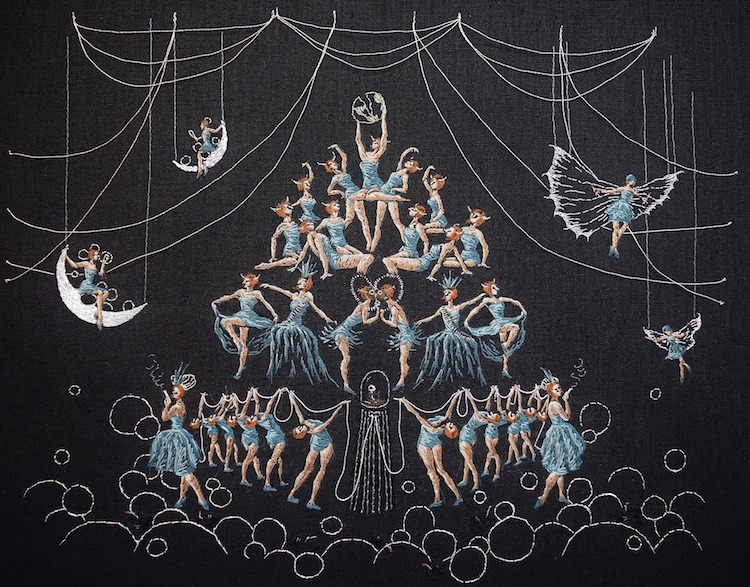
Name of piece: The Height of Folly
Year of piece: 2017
Size of piece: 14″ x 18″ unframed
Materials used: Embroidery floss on linen
Techniques used: Hand embroidery
A stark reflection
TextileArtist.org: How did the idea for the piece come about? What was your inspiration?
Michelle Kingdom: Since the US election in 2016, my previously interior-driven work has taken on a greater outside influence. As our politics grows ever more divided and unimaginably cruel, disturbing echoes from the past are evident. With the surge of blatant xenophobia, misogyny, racism, and an ever-widening disparity between the have and have-nots, there are clear parallels to the pre-world war II era.
On the heels of the impetuous firing of the FBI director, the brazen display of international corruption and influence, and a heartless and ill-conceived health care proposal among other things, my ideas for the piece began to emerge in late May of this year. Crystalizing after the isolationist decision to pull the country out of the Paris Climate Accord, I knew exactly what I wanted to do, create a piece that was a stark reflection the state of our country.
Usually I name my embroideries after completion but in this case, the title came first and served as a clarion driver for the work. It would be called The Height of Folly.
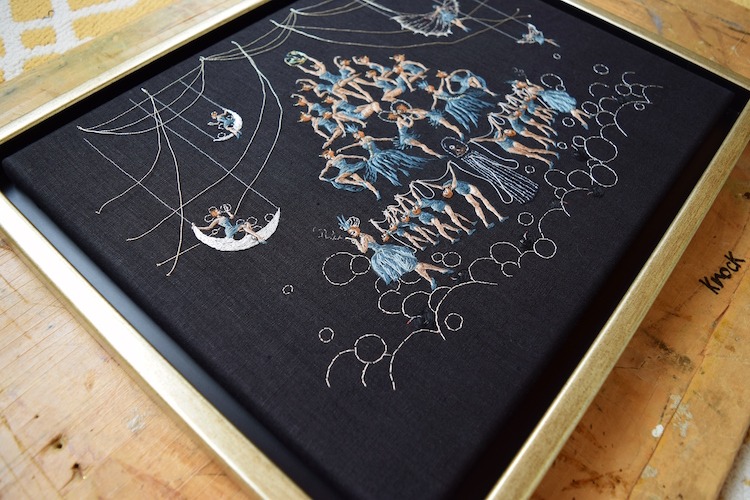
What research did you do before you started to make?
The choice to use the term folly was two-fold: to evoke an era of excess and frivolity exemplified by 20’s and 30’s theatrical revues, and to emphasize the notion wanton foolishness. I scoured the internet for images of showgirls, notably from the Ziegfeld Follies and The Folies Bergeres.
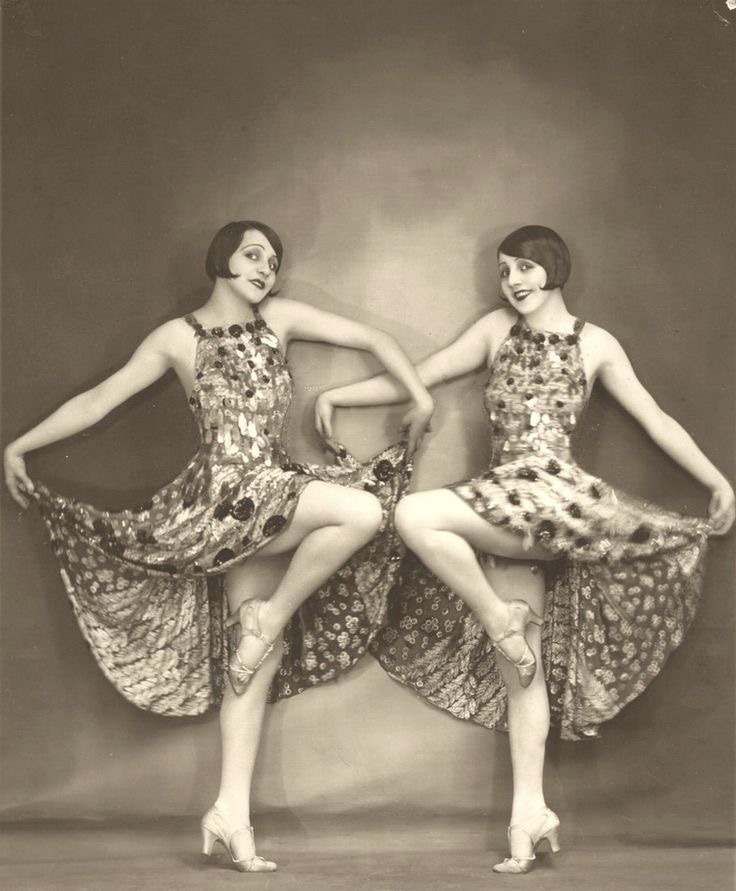
Wanting to assemble my own extravaganza, I stacked the anonymous showgirls in a layered cake formation, draped and displayed on stage. Many sketches and variations were made before finally settling on the final composition.
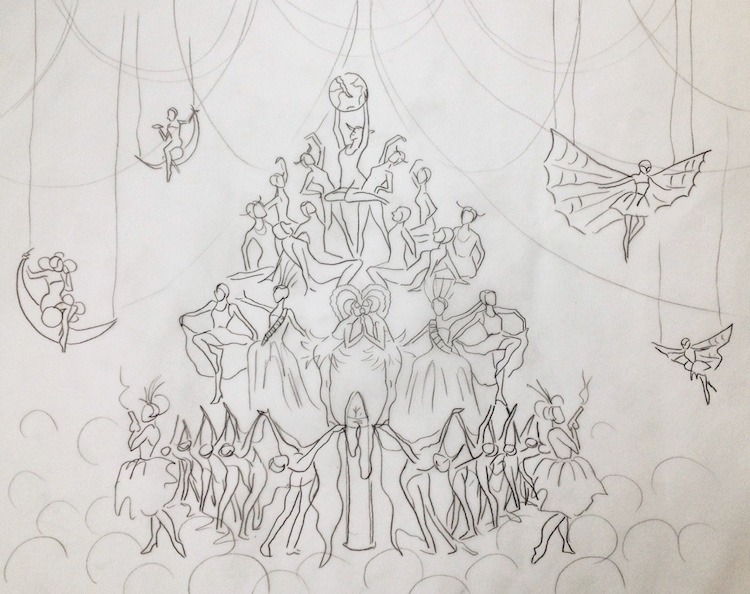
Once all the bodies were placed, additional research was done to complete each character in the cast. At the base of the ‘cake’ is a large Rockefeller era ticker tape stock machine, which the bottom row acrobatically hails in celebration. It is anchored on each side by guard figures carrying smoking guns. Beauty queens are proudly adorned in bullet sashes, while chorus girls with bullhorns surround a duo kissing through gas masks.
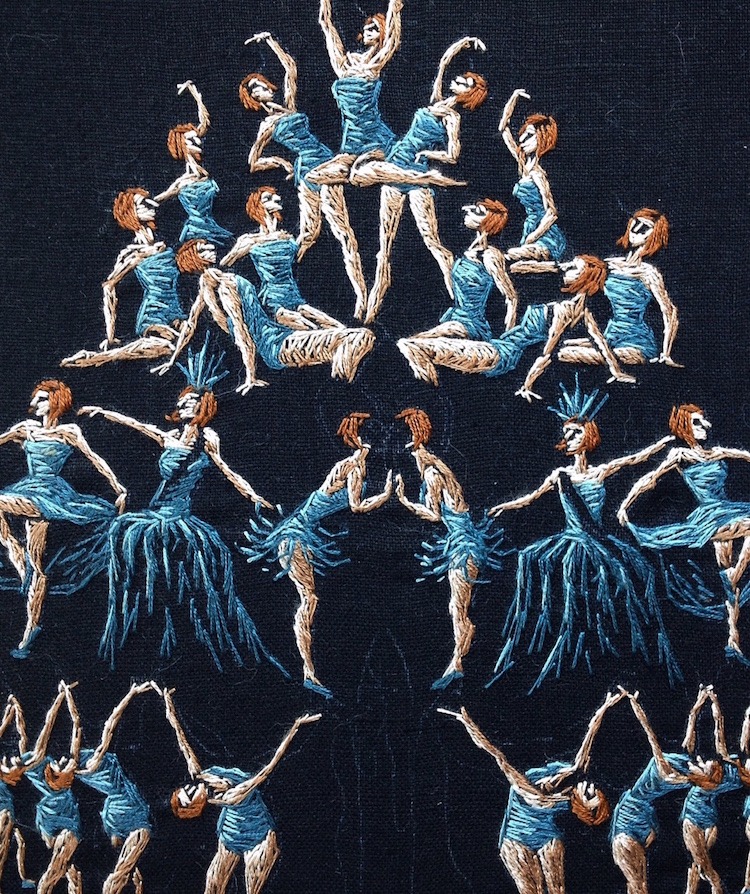
Rounding out the scene, blindfolded flyers are strapped with TNT and preoccupied moonstruck chatter boxes fritter and dangle precariously on their phones. The entire foundation is strewn with bubbles, with a few cannon ball bombs burning at the wick buried within. Atop it all, a devout horned figure upholds the cracked earth.
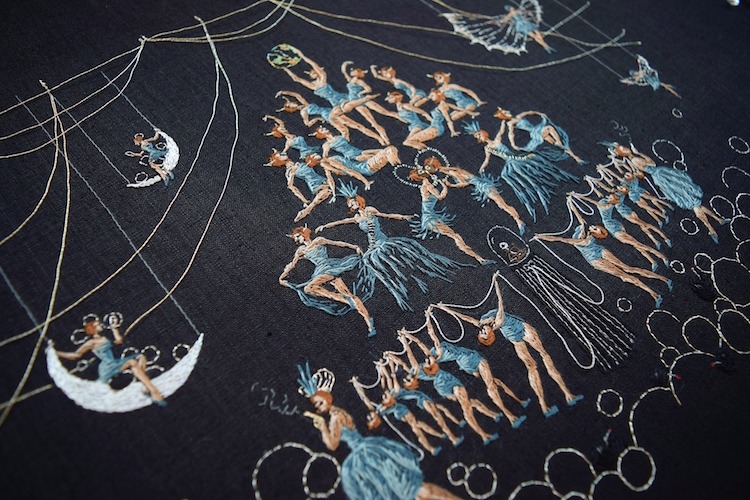
Was there any other preparatory work?
Frequently I am asked how long it takes to complete each embroidery. This question is usually focused on the stitching time, which is always difficult to quantify. The answer varies though it is certainly many many hours, but the time spent on concept and sketching should not be overlooked.
Many hours and preparatory sketches happen first, with much through and planning given to its realisation in stitch and eventual framing. After the final sketch is completed, it is faithfully transferred to the fabric with graphite paper.
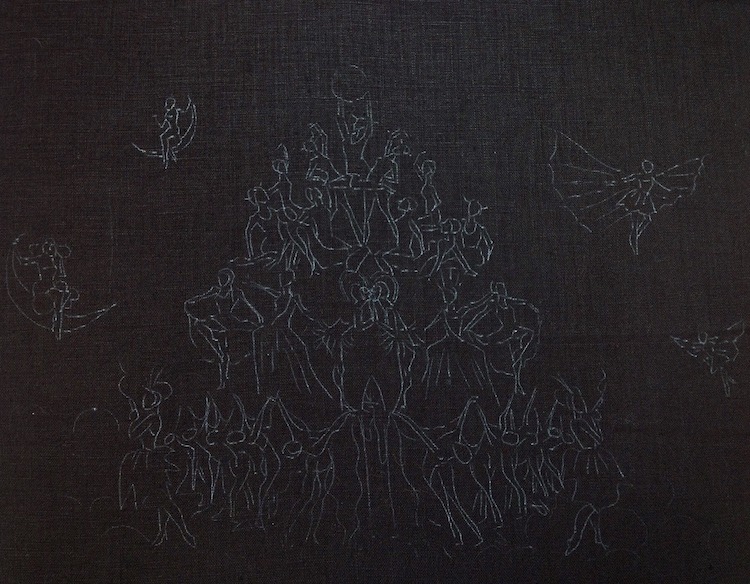
What materials were used in the creation of the piece? How did you select them? Where did you source them?
My materials are quite simple and minimal. My fabric of choice is 100% linen and then all I need is my needle, needle threader, floss and scissors. I work intuitively and prefer to use readily accessible supplies that I can find at the local art or fabric store.
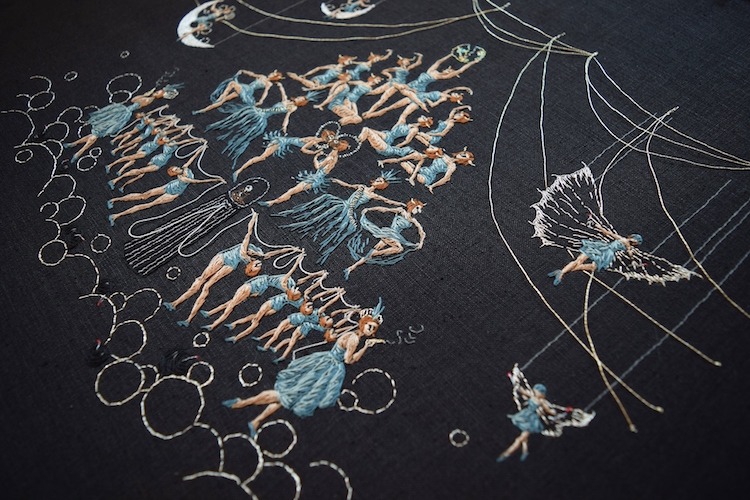
Painting with thread
Take us through the creation of the piece stage by stage.
Because I transfer my drawing with graphite paper, any marks are permanent; therefore I transfer only the most necessary lines which will later be covered over. I build form, tone and detail on the work itself. My colour palette for The Height of Folly was merely a vague idea at the start. Since there was a lot of small components, I knew I wanted to limit the colours for cohesion and effect, and chose a scheme of blues, white metallics and a hint of red.
Once preliminary decisions have been decided, the needle comes out and the stitch process begins. I have made a lot of embroideries over the years yet every single time I start a new piece, I feel like it’s the first one and say to myself “How the heck am I going to do this?”
Sometimes I go in with a single thread to lay a more detailed groundwork for the developed embroidery, which can also help me explore into the work and feel my way around for direction. In this case, it was not necessary and I began the dense stitching straight away.
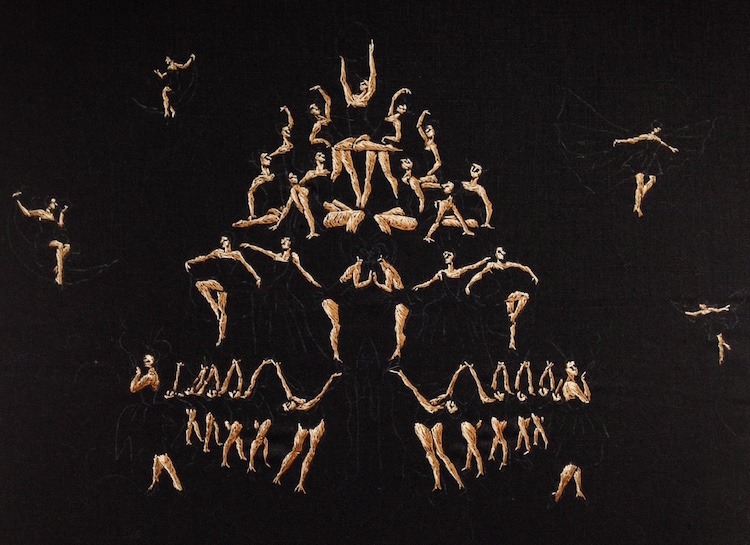
My creative interests ultimately lie in figurative narratives so I almost always start with the flesh. Since there were numerous tiny figures, my first attempt was to embroider with proper satin stitches, which I haven’t done in some time. But it didn’t take long before I ripped it all out and changed tactics. Satin stitch, and most proper stitches for that matter are incredibly beautiful but not what I am aiming for these days. It was too static and I wanted the piece to move and feel alive. I decided to use a sketchy gestural approach with light and dark tones, making it all up along the way.
As I would in a drawing or painting, I cycled through the work, tackling all the flesh, then all hair, then all the clothes, etc. After all the figures were executed in cotton floss, I turned to the minute symbolic details. I rarely use metallic or speciality threads and had to pay particular attention to its eccentricities to ensure a delicate balance for the weaponized accessories.
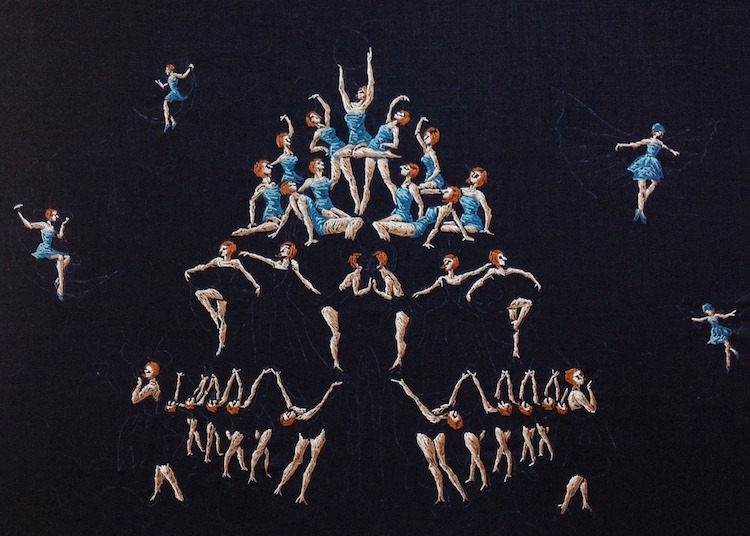
The bullet-shaped ticker tape podium was a challenge and I must have done it at least three times before I was satisfied. Despite all the loaded imagery in the work, the last thing I wanted was a glaringly overt golden phallic symbol at the centre of the piece. I finally settled on black with more subtle sateen and metallic highlights. The bubbles and bombs posed a similar challenge, which I elected to complete using minimal outlines interspersed with dense camouflage.
Others often describe my work as painting with thread but it is never my intention to make the embroideries imitate another medium. I am fascinated by the juxtaposition of rendering some areas with realistic tones while designating others to remain raw stitches or lines.
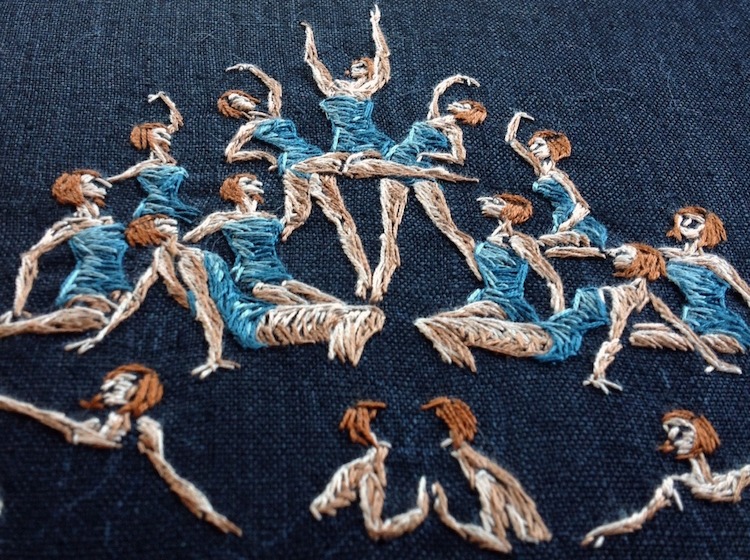
By the end, I inevitably had to deal with what I had been putting off from the start, how to execute the ‘drapery’. Sometimes I just want the effect of loose threads, no matter how precariously it will hang, or how unsure I am about how to make it happen.
By securing the single strands with tiny, engineered tack stitches, I was able to achieve the flowing, continuous line quality I envisioned. Since I never frame my work under glass, its integrity can be maintained, albeit carefully. Lastly, it was stretched over a painter’s canvas and mounted in a floater frame.
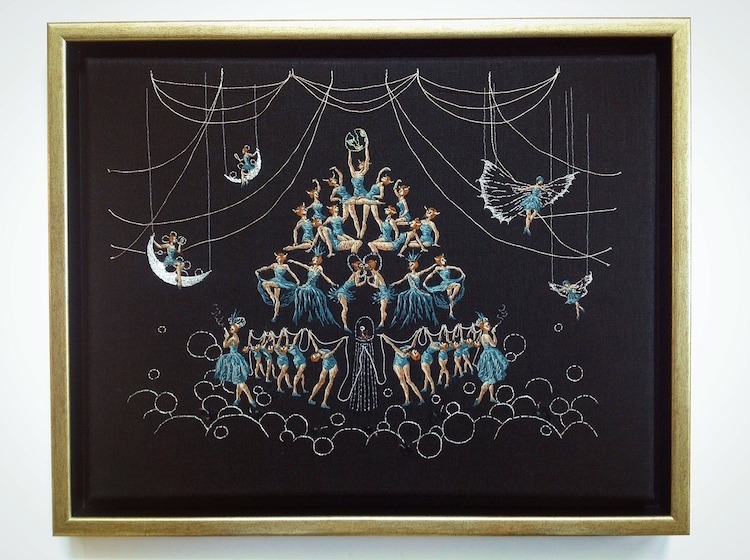
What journey has the piece been on since its creation?
The Height of Folly was well received even before it was finished. It sold immediately and currently lives with its new owner.
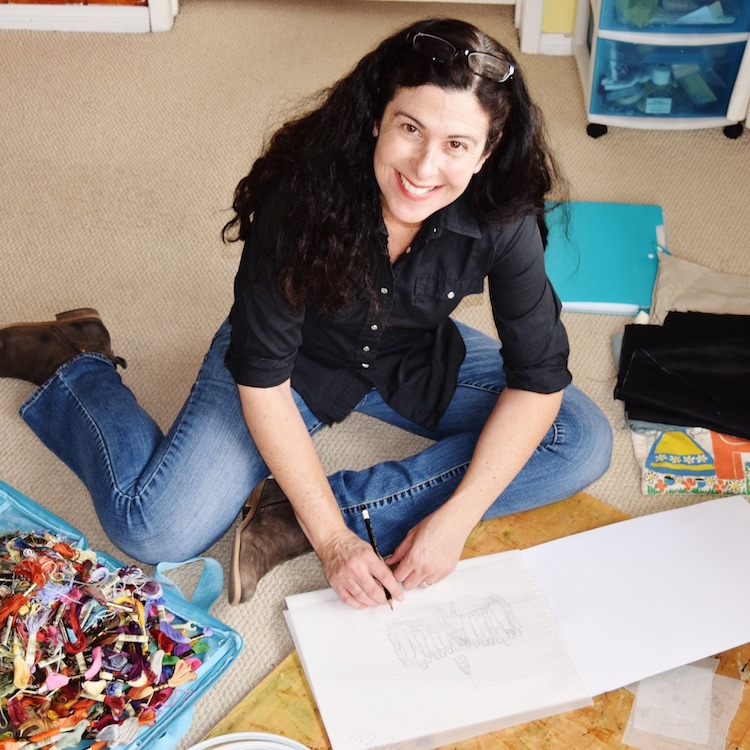
Read Michelle’s interview with TextileArtist.org here.
For more information visit: www.michellekingdom.com
Let your friends know about Michelle’s work by sharing the article on social media. It’s easy – click on the buttons below!
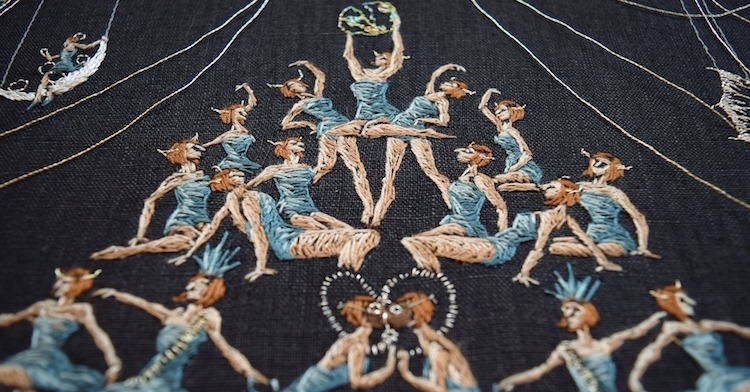
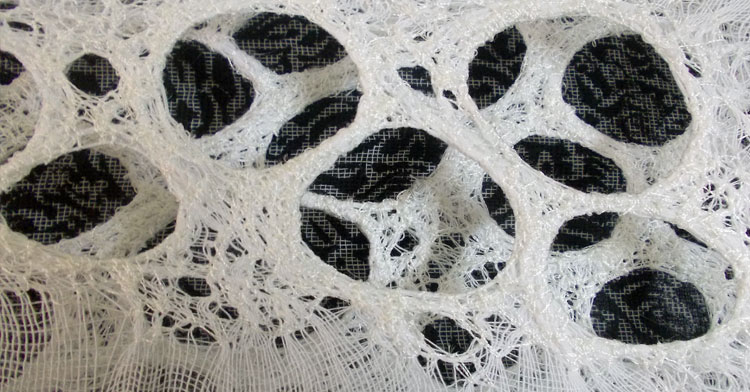
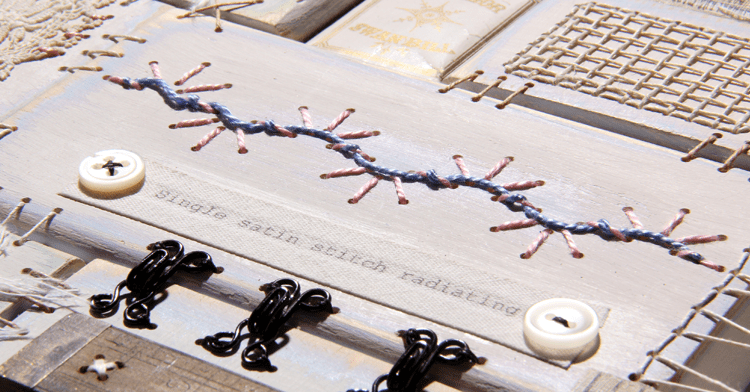
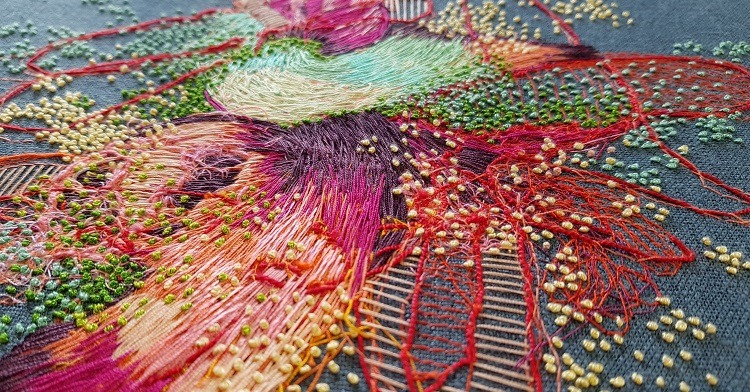
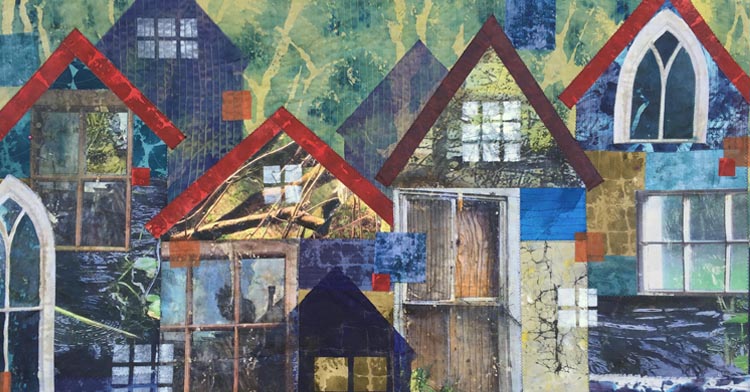
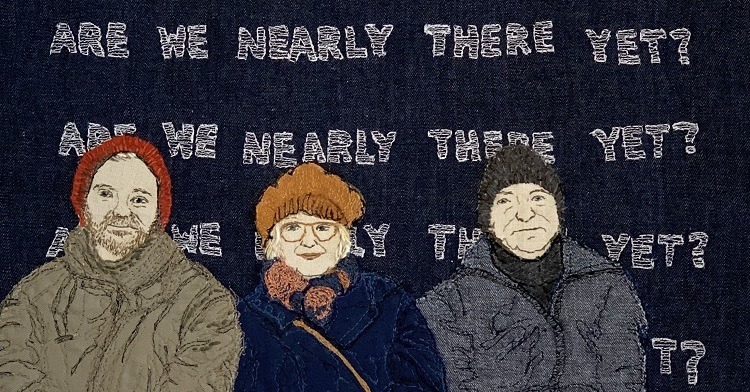
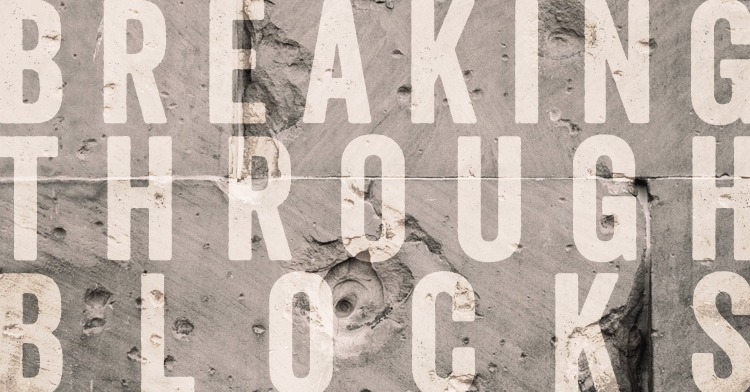
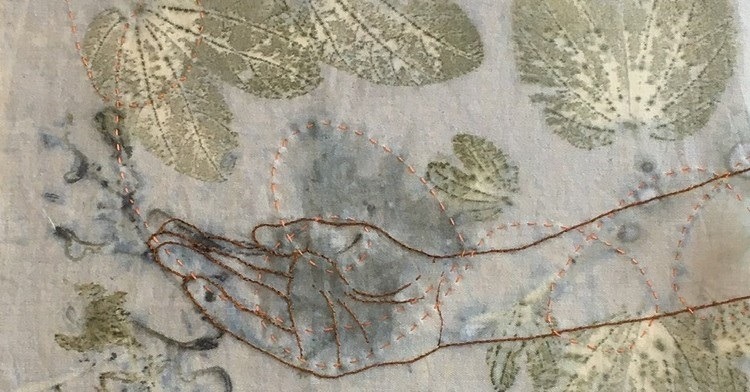
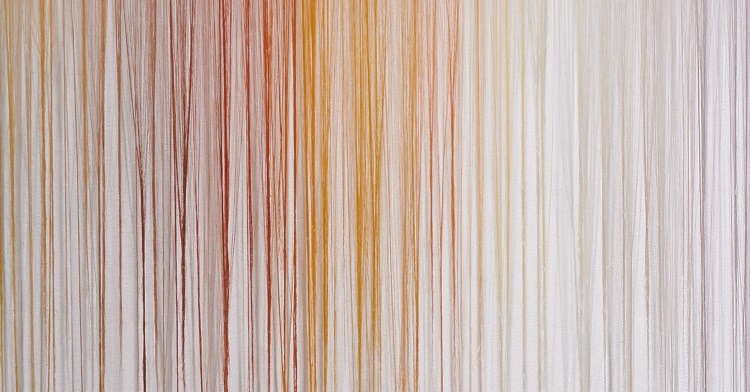
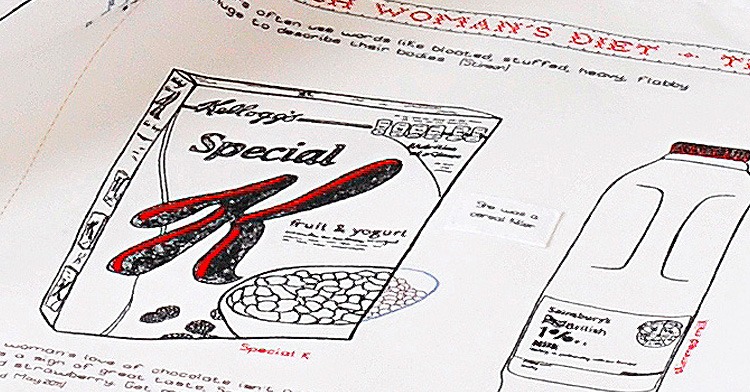
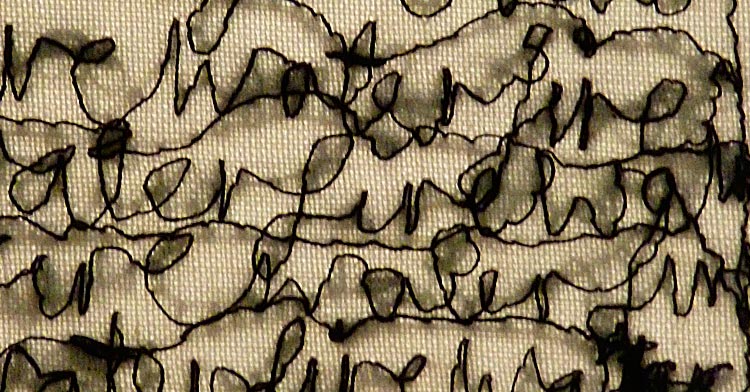
Comments